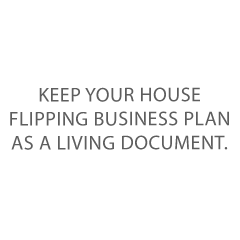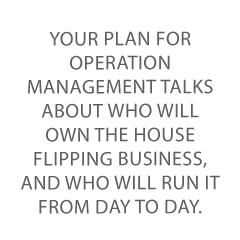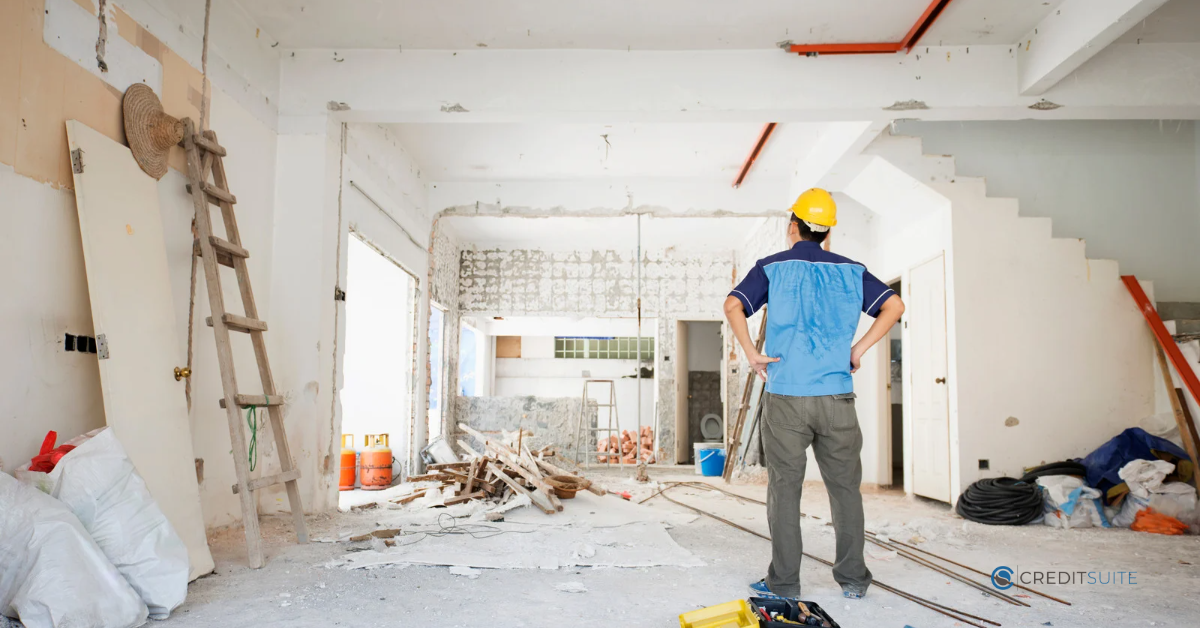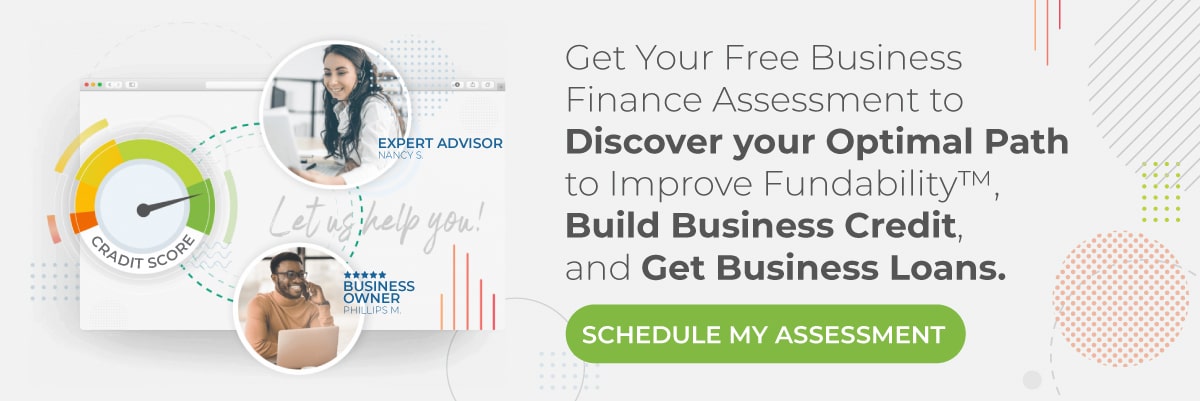Do you really need a business plan for flipping houses? Whether you’re seeking a hard money loan or looking to impress a real estate agent and real estate investors, it pays to have a house-flipping business plan.
It will even be a good deal of help for working with an online lender like Rocket Mortgage.
How do I Make a Business Plan for a House Flip?
Fortunately, there are several business plan templates available online. Here, we’ve already done all the research and condensed them all so you can get straight to writing your house-flipping business plan.
Beyond impressing money people like real estate investors, a business plan is, well, the plan for your house-flipping business. The blueprint, if you will.
Component 1 – Consider Your Target Audience
Who are you writing your house-flipping business plan for, exactly? A bridge loan provider? A real estate investor? A potential buyer of the real estate, perhaps? A home equity loan provider? Or are you mainly writing this business plan for the employees of your small business?
Yes, you’re a small business owner now. A well-crafted business plan is one way to walk the walk.
And your small business is planning to convert an average distressed property into an investment property. Your house-flipping business plan will show others just how you’re going to do that.
So, you need to address objections and skepticism directly. Show a rental property investor that they’re going to get a good deal. And show real estate professionals that you have the plan to turn a profit, and you’re not just hoping for a miracle.
Consider your own strengths and weaknesses, opportunities, and threats as well. This is what is called a SWOT analysis. A big part of writing a good house-flipping business plan is being realistic about the future of your flip business.
For example, you may be great at renovation but not the world’s best writer. Addressing your target audience directly and effectively just might mean hiring a house-flipping business plan writer.
Component 2 – Executive Summary
Your executive summary serves as a complete summary of your business idea. The description goes into further detail than the summary. Your executive summary adds a company description, answering such questions as:
What type of business is it? What product or service will it offer? Which business structure is it (e.g. limited liability company, or something else)?
Even if you feel these are questions with obvious answers, you will need to answer them anyway. Any investor or real estate agent who does not know you or your business well is not going to know that you’re flipping houses. You will have to give them these details.
Here is the part of your house-flipping business plan where you get others excited about your business. Talk about your niche here. You’re obviously not going to be doing property flipping across the country unless you have hundreds of employees.
Your niche, if nothing else, will be house flipping within the local real estate market.
And you can also talk about how your house-flipping business will handle any cash flow shortfalls or other bumps in the road. How will you cover closing costs and repair costs?
Will you be buying distressed properties at auction? Or will you be working directly with the homeowners? Do you know how to calculate the repair value?
Answer these and other basic questions about your house-flipping business here.
Component 3 – Strategies
Your strategies section will lay out your plan for getting started. Do you have a marketing plan? Where will your house-flipping business be located (even a virtual office is going to matter here)? How many employees will you start with? What is your ramp-up plan?
How will you make money flipping houses?
Outline how you will plan on finding the best properties for your business to flip. How will you attract contractors such as plumbers and electricians to work with you?
You will need to make contacts within several different industries when you want to start flipping houses. Even if you are an experienced house flipper, you cannot possibly know everything there is to know. No house flippers will.
And don’t say you’ll just wing it. Electrical work in particular, and roofing as well, are hazardous places to just fake it till you make it. No lender or realtor is going to want to work with you if you are unable to prevent electrical fires.
And no insurer will want to do business with your house flipping business if there are no strategies in place to prevent major injuries or even deaths, such as can happen if someone falls off a roof or they get a massive electric shock.
Component 4 – Research
You can also call the research portion of your house flipping business plan market analysis. You are going to have to understand the real estate industry and what kind of profit you can expect for any potential property purchase.
Your analysis should also cover how you see the future of your house-flipping business. But the financial projection will come later in the business plan. Here, rather, is where your market research goes.
This detail is going to inform every section of the business plan. If you are not good at researching (or you simply do not have the time because you’re busy with a flip house), then you may want to call in a professional.
Someone who understands how to conduct a market analysis and how to communicate it well to hard money lenders and people who are interested in real estate flipping could be a worthy investment.
A researcher who has experience with business planning, even if not in the real estate investing niche, could be someone to consider, at least to consult with.
Your research (whether you do it or someone else does) will have to address issues like whether you can still turn a profit in the face of rising interest rates. And having a better credit score may result in a lower interest rate, so take that into consideration as well.
Component 5 – Analysis of Audience
The analysis of the audience delves into the needs your real estate flip business is going to fulfill.
For example, will you be handling luxury real estate property, or sticking with flipping homes in areas that are prime for gentrification? Will you be specializing in single-family homes or small commercial real estate properties? How fast can you flip houses?
In this particular section, you are making a detailed and well-reasoned house-flipping business plan. After all, you may end up hiring employees who are depending on your flip business succeeding.
 Keep your house-flipping business plan as a living document. It exists for your flip business’s benefit as well as that of potential investors and lenders.
Keep your house-flipping business plan as a living document. It exists for your flip business’s benefit as well as that of potential investors and lenders.
After all, if you are ever incapable of running your flip business, or maybe you give it to one of your relatives to run, they are going to need a blueprint.
And the truth is, that it is entirely possible for your analysis of the audience to change over time. This is perfectly normal. In fact, you should probably expect this to happen. After all, you cannot possibly predict every single future contingency.
No one expects your house-flipping business plan to be absolutely perfect and capable of predicting the future.
Readers of it, like a real estate professional, just want to know if you’ve considered a few possible future scenarios and how you are preparing your business to address them.
Component 6 – Competitive Analysis
You will always have to account for your competition in a real estate business plan. A competitive analysis is exactly what it sounds like. That is, it analyzes the competition.
Your competition could come from small one-person outfits or people looking to build a real estate property empire.
It answers questions a lot like these:
- Are there already house-flipping businesses that are currently working to fill this need?
- Is there room in the local property niche for yet another such business?
- How do you plan to compete with all of the preexisting flip companies already competing in this space?
- What is going to be so different about your flip business that it will convince a property agent or a person interested in real estate investment to switch?
- How will you anticipate and solve some of the problems you see other flip businesses facing?
- How does your experience (and the combined experience of your employees, if any) stack up to that of your competitors?
- Do you have an operations plan that can help you cut some of your competition’s operating costs and increase your potential profit?
- What is your marketing strategy?
- What is your pricing strategy? How will you get money to cover your renovation cost?
That is, can your flip business stand out in its niche and become successful? Will you be able to meet your company’s funding requirements and achieve its goals?
Component 7 – Design and Development
This is not a place to discuss interior design for a property or even to work out the design of the business plan document itself. Instead, your plan for design and development explains how the process will play out, from soup to nuts.
What are the steps that you are going to take? In a way, this part is a more detailed version of your strategies section.
Now is the time to add the details. Who will run day-to-day operations in your flip business? How will you handle money shortfalls and the like?
Do you have a vision of how your business will adapt if you succeed? It’s just as vital as knowing what your flip business will do if you do not succeed.
Will success mean expanding to other parts of your city or town? Hiring workers? Bringing in professionals full-time, like carpenters, people to check titles, or even lobbyists if you run into governmental opposition to your plans?
Having an idea of what will happen when it all works out is important. Don’t be afraid to dream big. And your dreams will probably change and grow over time. How will you handle supply chain issues or another increase in the Prime rate?
Component 8 – Operation Management
 Your plan for operation management talks about who will own the house-flipping business, and who will run it from day to day. This could be as basic as specifying that you are going to be the sole owner and operator.
Your plan for operation management talks about who will own the house-flipping business, and who will run it from day to day. This could be as basic as specifying that you are going to be the sole owner and operator.
Or, it could be as complex as laying out a complete partnership plan or board of directors format. Do you have the management skills and plan to run the business directly or hire a manager for daily operations? The place to cover that is here.
This is the part where a lot of new business owners can get lost. How do you have a financial plan if there is no business yet? You will have to lay out your funding plan in this section. So, some of the questions you are answering are:
- How much money do you already have?
- Where did you get your current funds? Did they come from angel investors, personal savings, borrowing from your 401(k), a home equity loan, or something else altogether?
How much do you need in a flip loan? How will you use the money? This section will also contain a complete set of your financial projections. These projections often go out for at least 5 years. It’s best, if possible, to have an accountant put together your projections.
If you only hire one professional to help you with your business plan, this is one to seriously consider over other professional hires.
Component 9 – Appendix
This part of the business plan is optional. But the SBA and other professionals do recommend that you have one. You can include such things as owner credit histories, resumes, flipped home interior and exterior pictures, and even letters of reference.
All applicable licenses, permits, legal documents, and other contracts should be included as well.
Anything you can include that makes it easier for an investor or a lender is going to be a good move. You have the space, so why not use it? More detail about your company is just about always going to be better than less detail.
So, why not outline the expenses covered in your financial plans and how they might offset profit? Adding these sorts of details to your business plan will help potential investors and lenders see if there is anything that will impact your business negatively.
These could even be external events, such as anything from another pandemic lockdown to a supply chain disruption, a change in the law, or an increase in fuel prices. If it can eat into your profit, account for it here.
The more variables your flipping business takes into consideration, the better your business plan is going to be.
So, go beyond the standard business plan template here. Dig into the nuances of the house flipping industry and profit and loss.
Component 10 – Professional Editing and Design
In the same way that your house flipping project has to include landscaping, painting, and plastering, your business plan needs to look good. Keep your business plan professional in both content and appearance.
The last thing you want to do is make it hard for your reader to find what you will do with your profit, or if you don’t make a profit as fast as you would like to.
If you are using your business plan to apply for hard money or other types of loans, do not just fill out the questions on a loan application. Take the time to put together a well-written and well-designed strategy.
Here is another place where you can profit from the use of a professional. A pro-business plan writer can be well worth the money. If a writer can also perform research for you, then that is a win-win.
If you want or need to do it all yourself, then be sure to avail yourself of the full set of resources you can get from the SBA and Small Business Development centers.
You need a business plan for more than just getting business financing. It can help you make decisions about growth, and it can also help you recognize and shore up weaknesses. It also highlights your strengths for potential lenders, investors, and partners.
It can even help you convince partners to join your business. A well-researched business plan can help you recognize opportunities, as well, even some you may not have considered previously.
Takeaways
For a house-flipping business to succeed, you often need to have access to capital very quickly. Having a well-written business plan on hand will help to shorten the time from application to funding.
It’s also a blueprint for your business successors to be able to carry on your wishes, and even a sales brochure if you ever want to sell the business.
Since your business plan is vital for getting your business financing, give us a call to discuss your financing options and how business credit can improve your chances of getting the money you need, when you need it.
We can even show you how to use business credit to buy real estate.

